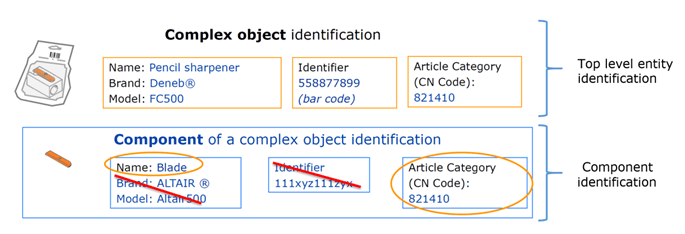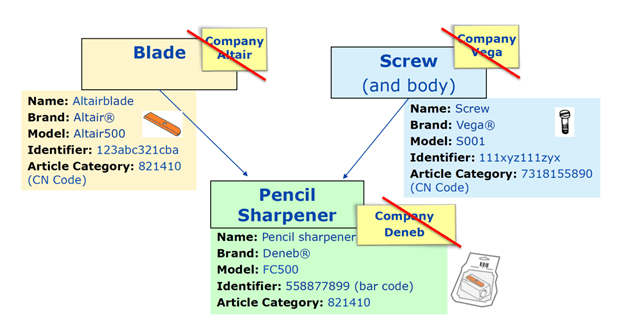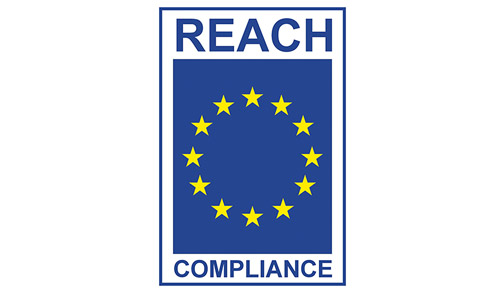Substances of very high concern (SVHC), as named, are highly hazardous. Articles* containing SVHC, therefore, require high attention from the whole supply chain and consumers to safely handle, use, and dispose of. SCIP database is the platform for such communication: it publishes all the necessary information to ensure the safe use of these articles, from manufacturing factories to waste plants.
This blog provides all fundamental information about the SCIP database: definition, purpose, practical guidance for usage, and confidentiality matters.
What is the SCIP Database
SCIP database was established under the Waste Framework Directive (WFD) 2008/98/EC. This database contains and publishes relevant information on Substances of Concern In Articles as such or in complex objects (products). The information is from a SCIP dossier, which is submitted in the compulsory SCIP notification by companies who supply articles containing SVHCs on the Candidate List in a concentration above 0.1% weight by weight (w/w) on the European Union (EU) market.
SCIP database is made available to the public, including the consumers and waste operators.
Purpose of SCIP Database
- Improve waste treatment operations: with information on the SCIP database, the waste operators can identify exactly which component in the articles contains SVHC and then apply proper sorting, separation, recycling, and waste treatment methods on those components.
- Support consumers in making informed purchase decisions and knowing how to safely use and dispose of articles containing SVHC.
- Improve supply chain transparency and corporate responsibility. Allow authorities to monitor the use of SVHC in articles and place appropriate chemical management policies.
- Reduce the amount of waste containing hazardous chemicals by promoting the substitution of SVHC in articles with safer alternatives.
SCIP database plays a critical role in increasing the knowledge of which substances are present in which articles. With sufficient information in hand, appropriate actions can be better implemented in the whole supply chain: from responsible purchase, safe usage & disposal to decrease & recycling of hazardous substances.
How to use
The SCIP database is published on the ECHA website. It includes more than 15 million factsheets from more than 33 million SCIP notifications. The number continues to grow with time.
Required data on articles containing SVHC (in a concentration above 0.1% w/w) placed in the EU markets are shown there, including these key points:
- Identification information of articles: name, identifiers, category.
- Safe use instruction
- Production in the European Union: indicate whether the article or complex object has been produced or assembled in the EU or not.
- Information on the SVHC contained in the article: name, EC and CAS numbers, concentration range
The database has a search function to collect information on a certain article. For example, waste operators can check which substance of very high concern is contained in a component of an old bike and how to collect or treat that component in a safe way.

SCIP database helps identify which parts of a product contain which SVHC
Confidentiality aspect
Which data shall be publicly available in the SCIP database? More importantly, what about confidential business information?
In short, under SCIP regulations, confidentiality has been well considered and protected where justified. There is specific guidance in dissemination and confidentiality in the SCIP database issued by the European Chemicals Agency (ECHA).
Firstly, information available to ECHA via the SCIP notification obligation is (1) the Database information and (2) the Administrative information.
The Database information will be made publicly available, as received, on the SCIP database because this information serves the purpose of ensuring the safe use and handling of articles containing SVHC to all actors in the supply chain and consumers.
With the same logic, the Administrative information will, therefore, not be published. Administrative information includes the names and contacts of the companies (i.e., legal entities) who submit SCIP notifications.
In addition, the database does not disclose any data that can help establish the link between a SCIP registration and its submitter. This way, the supply chain network of a product can be secured.

Administrative information of SCIP submitters is not published on the SCIP database
Secondly, only identifiers of top-level objects, i.e., articles as such or complex objects, are disclosed. In contrast, identifiers of components of articles as such or complex objects, which are the name (brand, model) and alphanumeric code, are not made available to the public.
This improves the protection of confidential ID information, for example the supply source of the product’s components.

Not all ID information of an article (for example, a pencil sharpener)
shall be disclosed
A summary of the main data to be displayed in the SCIP database:
| SCIP notification data | To be published on the SCIP database | |
|---|---|---|
| Top-level article or complex object | Complex object component | |
| Article name | Yes | Yes |
| Other names (brand, model) | Yes | No |
| Primary article identifier | Yes | No |
| Article category | Yes | Yes |
| Production in the European Union | Yes | Yes |
At Chementors, we follow the SCIP regulations and guidance to only submit the mandatory information. This way, confidential business information is legally kept.
It can be resource-challenging for enterprises to fully understand and master how the SCIP database functions to stay compliant.
Chementors experts are here to handle everything from SCIP dossier service and SCIP compliance assessment to training, as well as answering possible questions. SCIP is our daily work, and we keep ourselves up-to-date with the latest WFD regulations and ECHA guidance. We ensure our expertise in all SCIP-related matters with a compliant and efficient process.
Contact our experts for assistance.
* Article: an object which during production is given a special shape, surface, or design which determines its function to a greater degree than its chemical composition (REACH regulation (EC) No 1907/2006).




